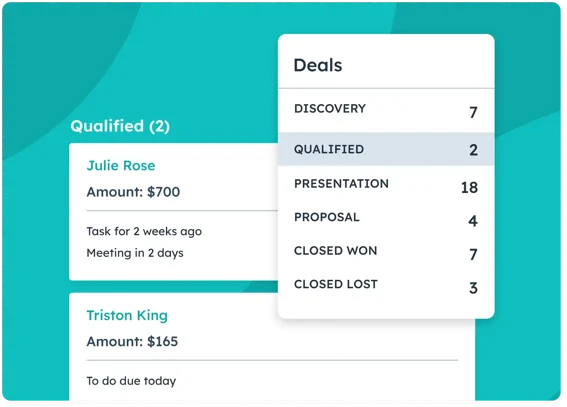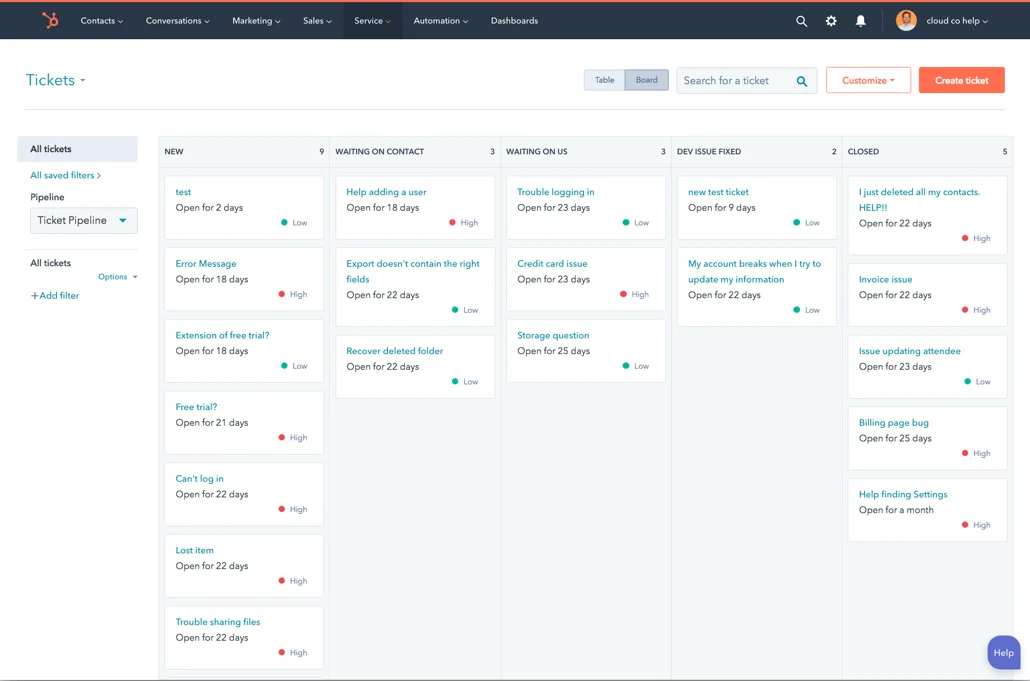HubSpot Sales Hub is an integrated platform ...

HubSpot Operations Hub Guide
25 Mar 2024
Table of contents
HubSpot Operations Hub is part of the HubSpot suite, which was developed to simplify, automate, and improve business processes.
The aim is to simplify internal operations by removing data barriers and ensuring automated, unified workflow management.
It enables companies to offer a personalized customer experience while gaining visibility over their internal operations.
HubSpot Hubs
HubSpot marks its presence in the digital marketing field with a modular architecture integrating five specialized hubs.
Operations Hub
Focused on improving operations, this hub automates data processing and enriches customer information.
Marketing Hub
This hub brings together all marketing activities, enabling the monitoring and analysis of marketing campaigns.
Sales Hub
Dedicated to improving sales processes, this hub simplifies sales pipeline management and enhances customer interactions.
Service Hub
Optimizing support operations makes customer service management smoother and improves response to user needs.
CMS Hub
Specializing in website creation, this hub offers tools for designing high-performance websites.
Commerce Hub
Designed to integrate e-commerce tightly. This hub facilitates the management of payments and subscriptions, enriching sales management.
HubSpot ecosystem integration
Like the other Hubs, Operations Hub integrates seamlessly with the other components of the HubSpot ecosystem, such as Marketing Hub, Sales Hub, CMS Hub and Service Hub. This integration enables real-time data synchronization between different departments.
Thanks to this synergy, teams benefit from a complete view of the customer, making aligning actions with corporate objectives easier.
HubSpot Operations Hub features
Data sync
Bidirectional synchronization enables the dynamic exchange of information between HubSpot and specific third-party applications.
This ensures that data is uniform and up-to-date across all systems.
This approach helps eliminate inconsistencies and promotes better coordination between teams.
You can find all supported applications in the HubSpot Marketplace.

Data integration examples
- CRM systems (such as Salesforce or Zoho CRM): When a contact is updated or a new sales opportunity is entered in these CRM systems, these changes are automatically synchronized with HubSpot. This ensures that information remains consistent and accessible on both platforms.
- Project management tools (Trello or Asana): Integrations with tools like Trello or Asana transform HubSpot into a central dashboard for marketing and sales projects.
- Accounting software (QuickBooks or Xero): By synchronizing HubSpot with these programs, details of financial transactions and customer information are automatically shared between platforms. This feature ensures consistent financial management by aligning sales data with accounting information.
- Email marketing platforms (Mailchimp or SendGrid): This feature enables the management of contact lists and email campaigns. Updates made on one platform are automatically reflected on the other.
Why do I need data synchronization?
Why do you need data sync?
Even though Hubspot offers a wide range of services, it's normal for you to use other applications to manage various aspects of your business.
Data synchronization enables you to connect these tools to HubSpot so that all your customer information is in one place.
Automated processes
HubSpot Operations Hub's process automation eliminates repetitive manual tasks, such as sending scheduled emails or updating lead statuses in the CRM.
As a result, teams only need to concentrate on more strategic tasks.
Moreover, actions are carried out automatically, simplifying processes and reducing errors.
Use cases and benefits
- Lead management: The automation feature organizes leads according to their interaction with your site. This classification allows you to identify only the most promising leads and pass them on to your sales teams. This method ensures a targeted and, therefore, more strategic approach.
- Customer follow-up: Automation activates sending personalized emails that correspond to customer activities, such as visiting a product page or abandoning a shopping cart. This adaptation of messages according to your site's behaviour or purchase path aims to create more relevant interactions.
- Task management: Automation also orchestrates the distribution of tasks within the team based on parameters such as geographical location, skills required, and current workload. Moreover, the system can assign follow-up to a specific sales agent if a new customer is registered.
Data quality automation and management
Data cleaning and organization
HubSpot Operations Hub provides a means of cleansing and organizing data without the need for manual intervention.
Fully automated, the system is capable, for example, of formatting customer names with capital letters, correcting date properties, updating telephone numbers, and so on.
In addition, its ability to detect duplicates ensures that databases remain constantly updated.
By minimizing error management, your operational teams benefit from a lighter workload.
As a result, they can concentrate more on growing the business, avoiding the need to rectify inaccuracies in customer information.
Impact on decision-making
Having access to quality, structured data directly impacts strategic business choices.
Organized information helps to understand market trends, review the performance of marketing campaigns and fine-tune strategies as required.
The accuracy of this information encourages strategic choices based on solid data.
Datasets
What are datasets?
As your business grows, so does the volume of your data.
This includes adding objects, fields and metrics that make reporting more complex for business users.
The more varied the data, the more difficult it is to design meaningful and useful reports without a deep understanding of the data and advanced technical skills.
Users are often dependent on operational teams to create reports. Introducing datasets in HubSpot Operations Hub simplifies this collaboration, making report creation more direct and autonomous for business users.
Business users can more easily generate reports without technical assistance by enabling them to prepare organized data sets.
This saves time and improves data management for both groups.
Snowflake integration
Snowflake is a specialized cloud-based data processing platform designed to simplify the analysis and storage of large volumes of data.
By bringing this information together in one place, it facilitates access and, more importantly, analysis of the data.
This includes customer interactions from CRM systems, marketing campaign results, financial transaction details and customer service feedback.
Programmable automation
Programmable automation lets you execute code directly in HubSpot workflows.
This programmable automation consists of three actions:
- Custom code actions in workflows.
- Webhook actions in workflows.
- Custom code actions in bots.

Why is this a good thing?
As your business grows, so does the number of customer touchpoints. Maintaining a consistent customer experience across all these channels without sacrificing internal performance requires robust automation.
Common examples of use
You can build actions into workflows or bots with custom code actions, leveraging JavaScript or Python.
These actions enable you to perform several actions, such as API calls, SQL query execution and object modelling.
Let's say a prospect fills in a form on your site, providing information such as their sector of activity, the size of their company, and their specific needs.
You can use a custom code action to analyze this data in real-time and determine the lead's priority level. Based on this analysis, the system could automatically :
- Classify the lead as a high priority if the criteria match your ideal customer.
- Send a notification to the sales team for immediate follow-up.
- Add the lead to a personalized email sequence designed to engage high-priority prospects further.
The pivotal role of the Operations Hub: the silent connector at the heart of the HubSpot ecosystem
HubSpot's Operations Hub, often perceived as a technical element in the background, plays a pivotal role in the synergy between HubSpot's various hubs.
As a silent connector, it eliminates silos between data and processes, making internal operations more fluid and consistent.
This deep integration with the other hubs—marketing, Sales, Services, CMS, and Commerce—enables unified, synchronized data management across the enterprise.
Thanks to its process automation and data synchronization capabilities, the Operations Hub facilitates the other hubs to operate more integrated and aligned with the company's overall strategies.
Why choose Momentumm?
As a certified HubSpot Partner, Momentumm enables seamless efficiency thanks to its Montreal-based team, which handles integration with all your business intelligence applications. Witness immaculate data synchronization via Operations Hub, providing your organization with a unified data set for all departments. Discover unprecedented synergy, ensuring a harmonious workflow between your company's different teams.






